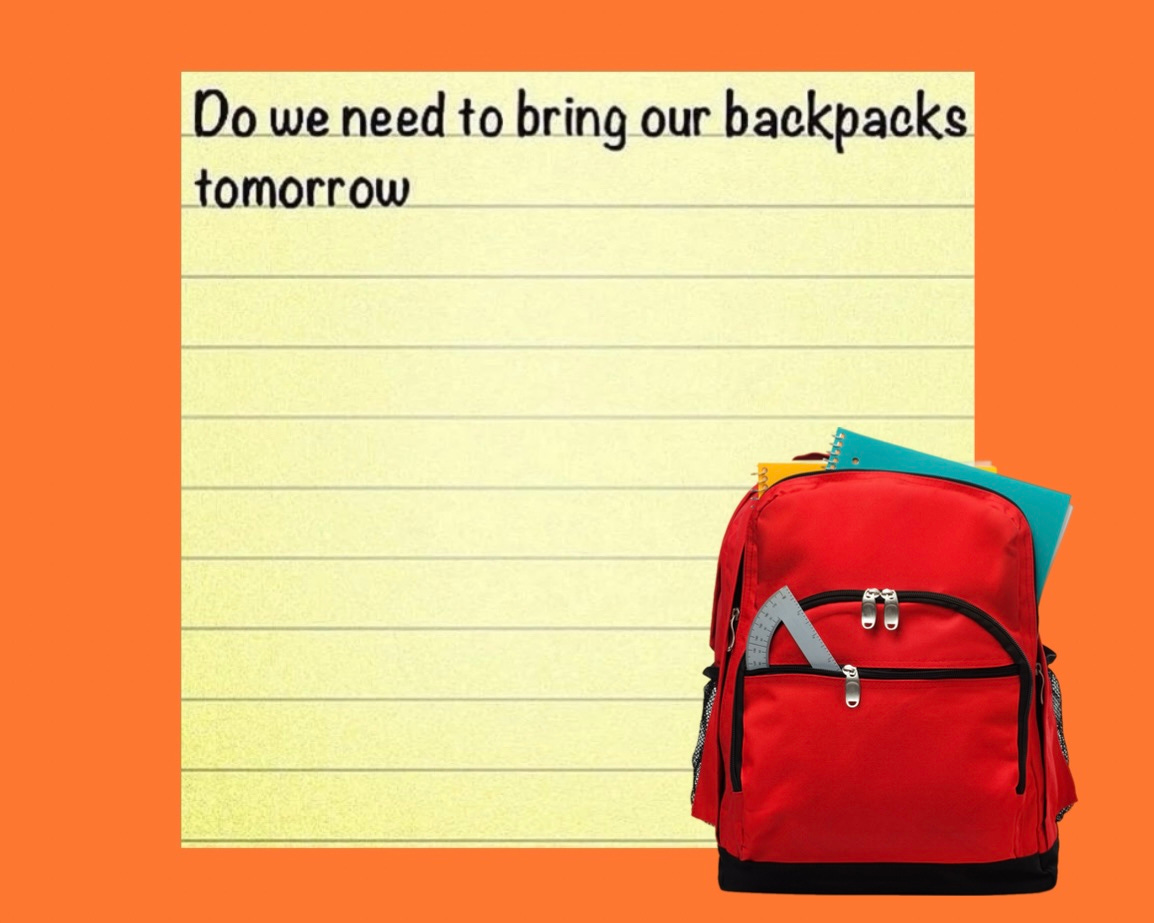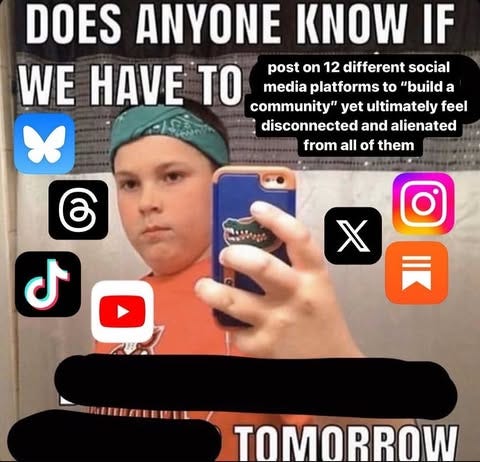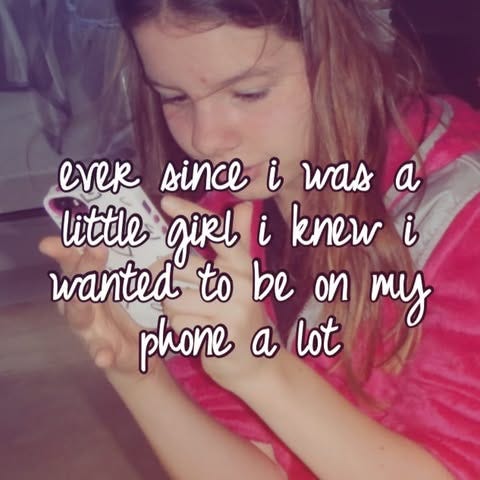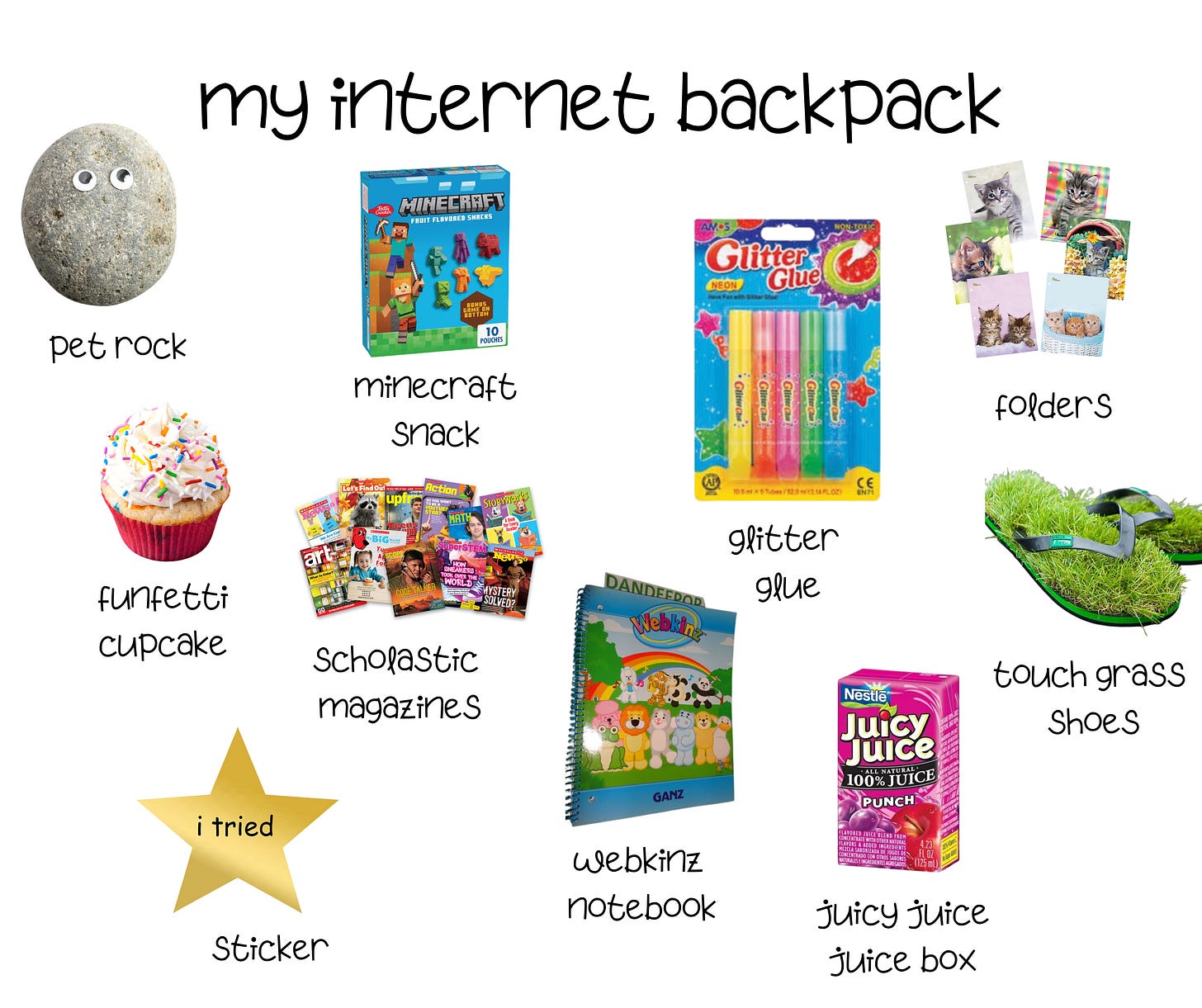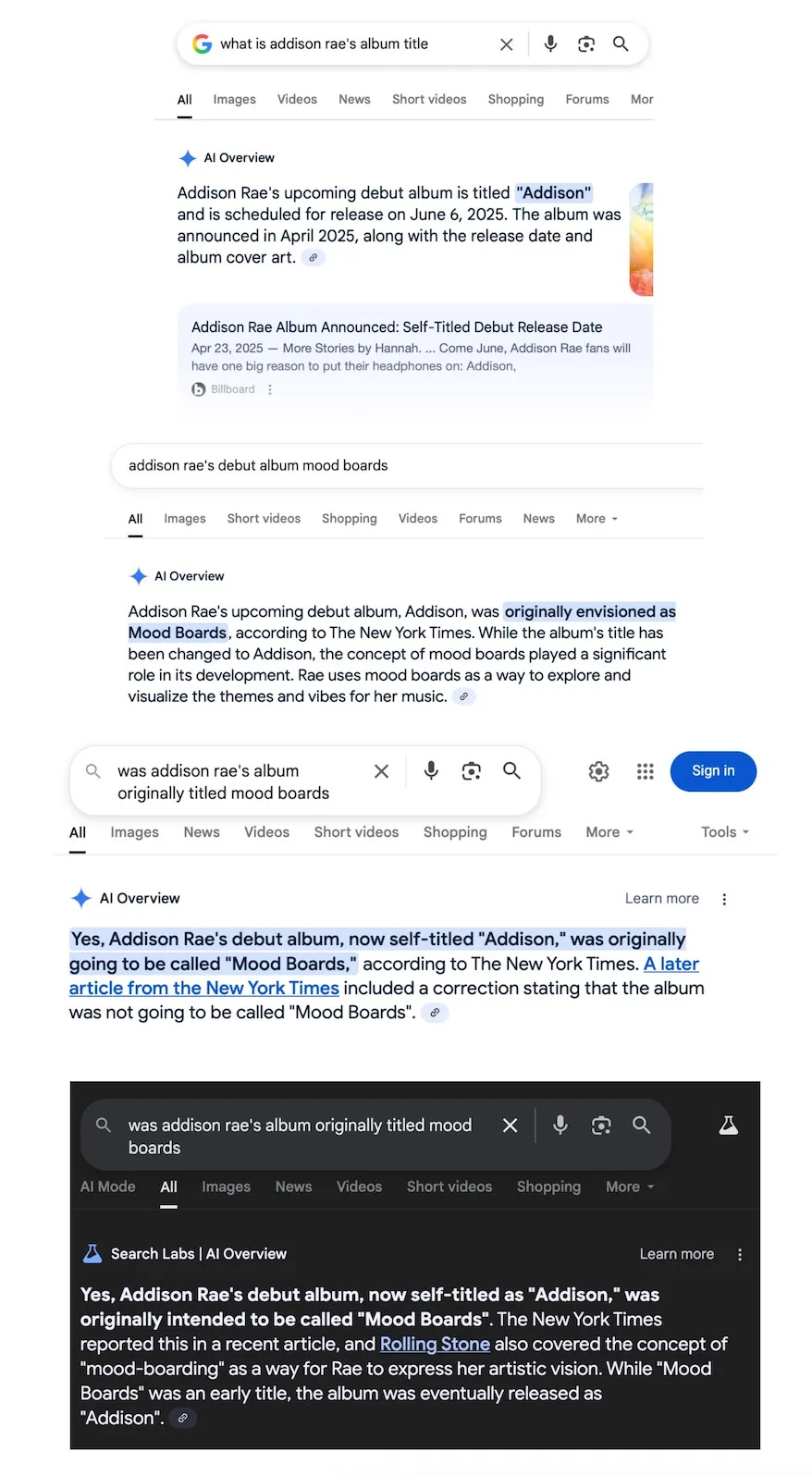Do we need to bring our backpacks to Substack tomorrow?
This one Notes app screenshot brings back all my nostalgia for middle school Instagram.
Today’s issue of PHONE TIME includes—some reflections on middle school Instagram and scrolling as creative practice. Plus, a screen time app that lets you pet a dog to unblock distracting apps, my thoughts on the future of LLM “deep research” tools, and a gentle reminder to actually click on the article link in that Pop Base tweet.
Today, I’m going to try the Curiosity Café by Perplexity coffee. I’ll report back.
“Do we need to bring our backpacks tomorrow”
If you were in middle school and on Instagram from around 2011 to 2013, as I was, you probably saw your peers asking a question like this the night before any unconventional school day: a field trip, a half day, the last day of school. Usually, the post was a screenshot of a short message typed in the Notes app.
Before the launch of Instagram Stories in 2016 and the broader shift toward aesthetic, curated grids, this kind of image would be posted directly to one’s main grid. Even after the question had been answered and “tomorrow” had come and gone, the image was often left up.
Today, the backpacks question has been cemented in internet culture as a meme. A version featuring a picture of a child taking a mirror selfie has proliferated in recent years as a snowclone (see the meme I made below). But the origins are practical. Absent official communication from teachers, no one wanted to be the one kid who showed up with a backpack when no one else brought one.
I usually roll my eyes at the cliché of some golden age of Instagram, or social media in general. There was and is, of course, pervasive bullying, comparison, gossip, and privacy concerns. But I think there’s a simple reason this image, and other relics of middle school Instagram history, keep circulating on meme pages today. They bring us back to a time when social media felt genuinely fun.
I’m reminded of Julie Beck’s 2022 story in The Atlantic titled “Why Did We All Have the Same Childhood?” It’s about why children across times and places in the U.S. share so many jokes and traditions: writing the “cool S” in notebooks, playing certain hand games, and typing 8-0-0-8-5 into a calculator.
“When children are together, they develop their own rituals, traditions, games, and legends—essentially, their own folklore, or, as researchers call it, ‘childlore,’” Beck writes. She adds that children will often say they invented these small rituals themselves without much interest in tracing where they came from.
What I loved most about the article was Beck’s characterization of such things as “almost like analog memes, micro-bits of culture that seemed to come from nowhere and everywhere.” The backpacks question post isn’t exactly analog, but it’s grounded in that same kind of playful, everyday school routine experience.
What’s changed since I was in middle school over a decade ago? Among many other obvious things, there’s a collapse of boundaries between offline and online culture. Students have heightened awareness of their online presences. Instagram’s features have also changed. If I were a middle schooler today, I’d ask that backpack question via a Close Friends story or a finsta, not a post on my main grid.
Another early Instagram Notes app screenshot—that has now become a meme in its own right—begins with the sentence “ATTENTION ALL INSTAGRAM USERS!” It goes on to warn that Instagram will soon be deleting all unused accounts. To prevent this, you supposedly had to repost the picture by Feb. 5, 2013 and tag it #savemyinstagram2013.
I don’t remember reposting this. Needless to say, my Instagram account was not “deleted forever.”
Looking back now, the idea that Instagram would announce this via a spontaneous Notes app message is laughable—which is what makes it such good content for meme repost pages. But similar versions of chain mail proliferate today, and plenty of people fall for them.
Scrolling as creative practice
One of my favorite things to do, when I need inspiration for memes, writing, or other internet work, is scroll through my bookmarks, saves, and likes across different apps. I’ve been working on a non-PHONE TIME project with the working title “How to Archive the Contents of Your iPhone: And the Things You’ll Learn Along the Way” where I’ve been doing a lot of scrolling through the contents of my phone; I’ll probably put it up here at some point. (ICYMI, I scrolled the bottom of Instagram’s Instagram).
Whenever I’m back home in the Midwest, I go into the basement and take out a giant plastic bin that holds my drawings, projects, scrapbooks, journals and other things from my childhood. Going through my Instagram likes sorted from oldest to newest, which I do from time to time, feels a lot like that. A lot of the posts I would like are, like the backpacks screenshot, earnest. “Repost if you love Minecraft,” reads one. Whenever I do this scrolling exercise, I always get a kick out of the lack of pretense. I liked one a photo of a sad Spongebob with the caption “Double tap to fix this broken heart.”
★☎️⏱️If I brought a backpack to the internet, here’s what would be in it★☎️⏱️
Elsewhere online
I’ve been trying out screen time apps lately, and I think making a truly effective one is probably harder than it looks. I reviewed Touch Grass back in April. The premise is simple: you have to literally touch grass to unlock distracting apps. There’s brainrot, which describes itself as “a stupid simple screen time app” and shows your brain “rotting” the more you go on distracting apps. The app Roots recently added a feature that lets you pet your dog in order to unblock apps.
Here’s your daily dose of journalism nerdiness. On Tuesday, I saw a Pop Base post on X that said, “Addison Rae tells The New York Times that she originally titled her debut album ‘Mood Boards.’” I clicked the link out to the article and lo and behold, there was a correction noting that the album was not, in fact, going to be called “Mood Boards.” Pop Base later deleted the post, but it made me question the efficacy of the traditional end-of-story correction appendage in a Popcrave-ified news landscape where fewer people are actually visiting the original story. The original line in the Times story was “(Its original title was, in fact, “Mood Boards.”)” including the parentheses.
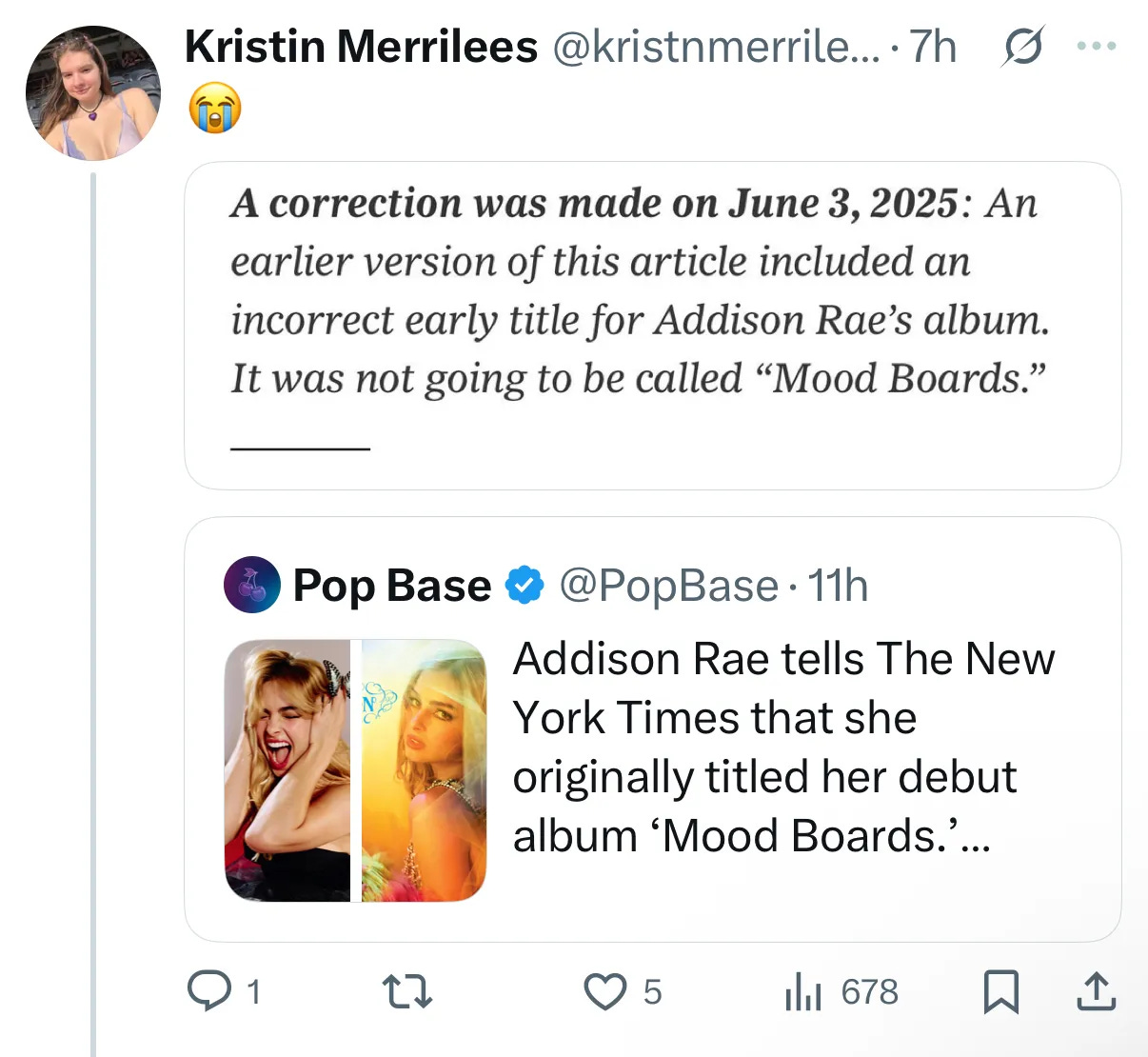
I think the confusion may have something to do with Rolling Stone’s January profile: “Inside Addison Rae’s Upcoming Debut Album: Mood Boards, Max Martin, and High Fashion.” Note the colon! The article covers Rae’s extensive use of mood boards in planning the album, but doesn’t say that was ever going to be the title. As a further experiment, I put some different queries into Google (the three light mode screenshots I’m not logged into my Google account; the dark mode screenshot I am). These results are also from June 3. All of this is to say: there’s value in reading stories straight from the source! Not just to support the journalism, but also because multiple layers of aggregation or AI summarization can jumble nuance and miss updates.
Poolsuite V3 is out.
A new tool called Spine Research describes itself as “iterative deep research you control.” In the Product Hunt launch post, CEO and co-founder Akshay Budhkar wrote: “Most deep research tools out there are a black box; you don’t really know why it’s doing what it’s doing. Your only guidance is through a chat message—which is often the wrong UX for a multi-step process.” Spine’s pitch is that it offers a customizable, step-by-step interface that’s more collaborative.
This caught my attention because I think we’ll see a lot of “deep research” tools that brand themselves as narrative, iterative, curated, and even artisanal. A lot of current tools feel static and formulaic, which might be useful to consultants. It’s less appealing to artists, technologists, writers, and creatives (myself included) who don’t buy into these tools as comparable to doing research the old-fashioned way. It’s a process that is messy and inefficient and often leads you down a series of dead-end rabbit holes, but that’s part of the magic. While Spine Research still emphasizes efficiency, I think the language about iteration and collaboration “between human and machine” is a first step in this direction.
I previously wrote a bit about New Computer’s branding and language emphasizing authenticity and connection.
★☎️⏱️ Desktop Goose! You’re getting in the way of my draft!⏱️☎️★




